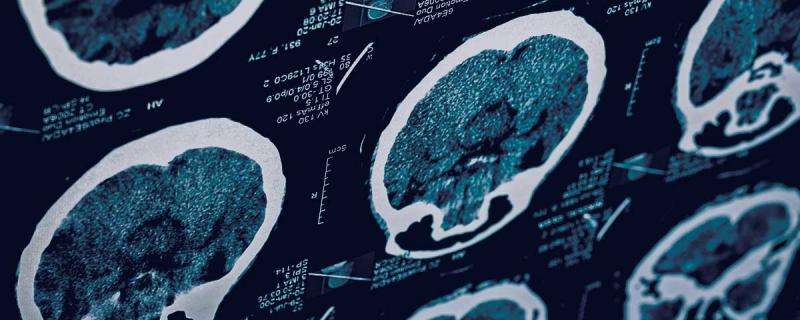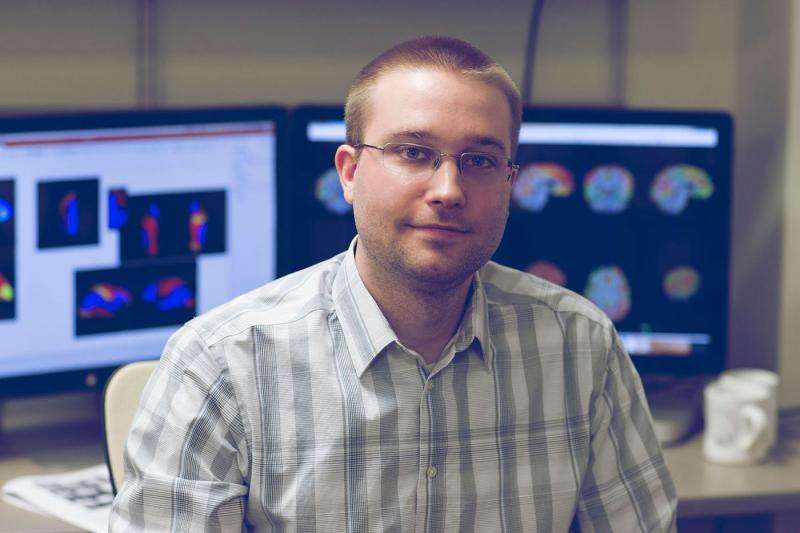Subconcussions cause changes to brain, study of college football players shows

The average college football player receives about 1,000 head impacts each season. Some of these hits result in concussions – traumatic head injury that results in short-term, and possibly even long-term, damage to brain function.
But what are the effects of the hundreds of routine head impacts, called subconcussions, that occur during a four-month season of practice sessions and games?
A University of Virginia neuroscience Ph.D. candidate is trying to find out.
Using functional magnetic resonance imaging – fMRI – Bryson Reynolds studied the brain activity and connectivity of a group of healthy college football players, before and after a competitive season, and compared the data to brain-activity scans of healthy male college soccer and lacrosse players, and to a control group of college male non-athletes.
He found that the football players experienced a disruption in "local functional connectivity" – the way different areas of the brain communicate with each other – while soccer and lacrosse players' brain activity did not noticeably change after a competitive season. The result for the soccer and lacrosse players was comparable to the control group, which also displayed no brain activity changes during a four-month period.
"This is an important discovery regarding the football players because a similar disruption of local functional connectivity has also been found in athletes diagnosed with a concussion," Reynolds said.
In other words, repeated head impacts over the course of a season, or perhaps a career, may be affecting the brain in ways not yet understood, but possibly similar to actual concussions.

"We have no ideas how these subconcussions might be affecting players' brains, but we are seeing concussion-like changes to the brain, at least in the short term," Reynolds said. "This does not necessarily mean that something bad is happening to the brain, but clearly some changes are occurring over the course of a season."
Neurologists know that concussions cause headaches, dizziness and sometimes loss of consciousness, and may also increase the risk for developing serious long-term neurodegenerative disorders, such as Alzheimer's disease, amyotrophic lateral sclerosis and chronic traumatic encephalopathy.
Reynolds' study did not include players who suffered concussions, and the subconcussions he observed were not causing perceptible problems or symptoms for the players. But the disruptions in brain activity recorded in the fMRI scans may indicate subtle changes that could be part of a larger picture.
Whether or not repeated smaller blows are a risk to brain health over periods of time longer than a season, or over the course of a lifetime, needs further study, Reynolds said. He emphasized that his study only indicates that changes to brain activity occur during a football season, but does not necessarily mean that subconcussions are causing damage.
"Once we learn what types of changes are occurring in the brain in response to concussive and subconcussive head impacts, we can start to develop solutions," he said. "This might involve game rule changes that minimize head impacts, better helmet design, eliminating full-contact practices and possibly raising the age at which kids play tackle football. But to develop good solutions, we need a better understanding of what's going on in the brain."
Reynolds presented his study, which is part of his Ph.D. dissertation, in February during a "three-minute thesis" competition sponsored by UVA's Office of Graduate and Postdoctoral Affairs. Last year, he was a co-author of a study published in the Journal of Neurosurgery suggesting ways to reduce head impacts during practices. He notes that Ivy League teams recently eliminated full-contact practices, which he believes may significantly reduce the risk for brain injury.













